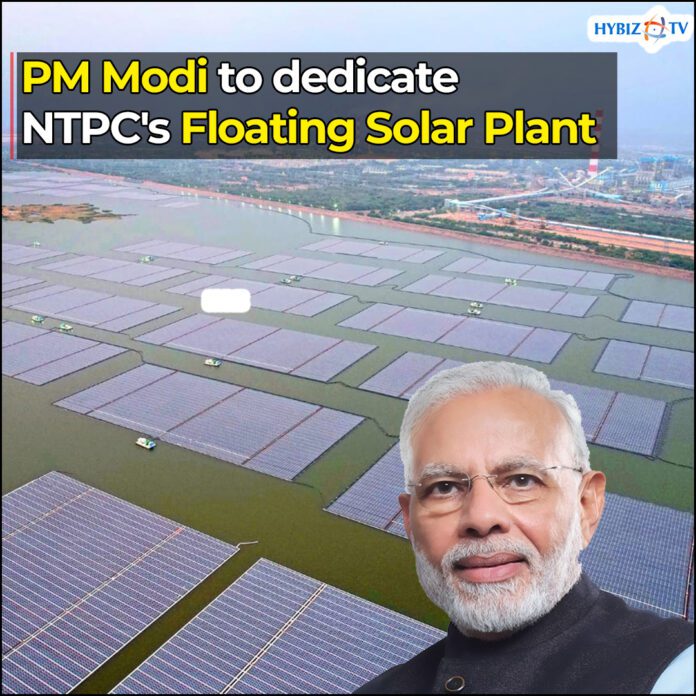PM Modi to dedicate NTPC’s Floating Solar Plant
On July 30, Prime Minister Narendra Modi will dedicate the country’s largest floating solar power project, NTPC Ramagundam, with a capacity of 100 MW.
Prime Minister Narendra Modi will dedicate the project to the nation via virtual mode from New Delhi at 12 p.m.
By completing 20 MW of final part capacity, the country’s largest floating solar PV project was declared commercially operational on July 1, this year.
The 100-MW Floating Solar project at Ramagundam is the largest in the country and is equipped with advanced technology as well as environmentally friendly features. The project spreads over 500 acres of the reservoir and was built with a financial implication of Rs 423 crores through BHEL as an EPC (Engineering, Procurement, and Construction) contract.
Divided into 40 blocks of 2.5 MW each. Each block is made up of one floating platform and 11,200 solar modules. The floating platform is made up of one inverter, one transformer, and one high-tension breaker. The solar modules are mounted on floaters made of HDPE (High-Density Polyethylene).
The entire floating system is connected to the dead weights in the balancing reservoir bed by a special HMPE (High Modulus Polyethylene) rope. Through 33KV underground cables, power is evacuated up to the existing switch yard. This project is unique in that all of the electrical equipment, including the inverter, transformer, HT panel, and SCADA (Supervisory Control and Data Acquisition), is also installed on floating Ferro cement platforms. Bottom anchoring via deadweight concrete blocks is used to secure this system.
The most obvious environmental benefit is the reduced land requirement, which is mostly for associated evacuation arrangements. Furthermore, the presence of floating solar panels reduces evaporation from water bodies, aiding in water conservation.
Water evaporation of approximately 32.5 lakh cubic meters per year can be avoided. The water body beneath the solar modules helps to keep their ambient temperature stable, improving efficiency and generation. Similarly, while 1,65,000 tonnes of coal can be avoided each year, 2,10,000 tonnes of CO2 can be avoided.
ALSO READ: Six Urban Forest Parks open in Hyderabad














